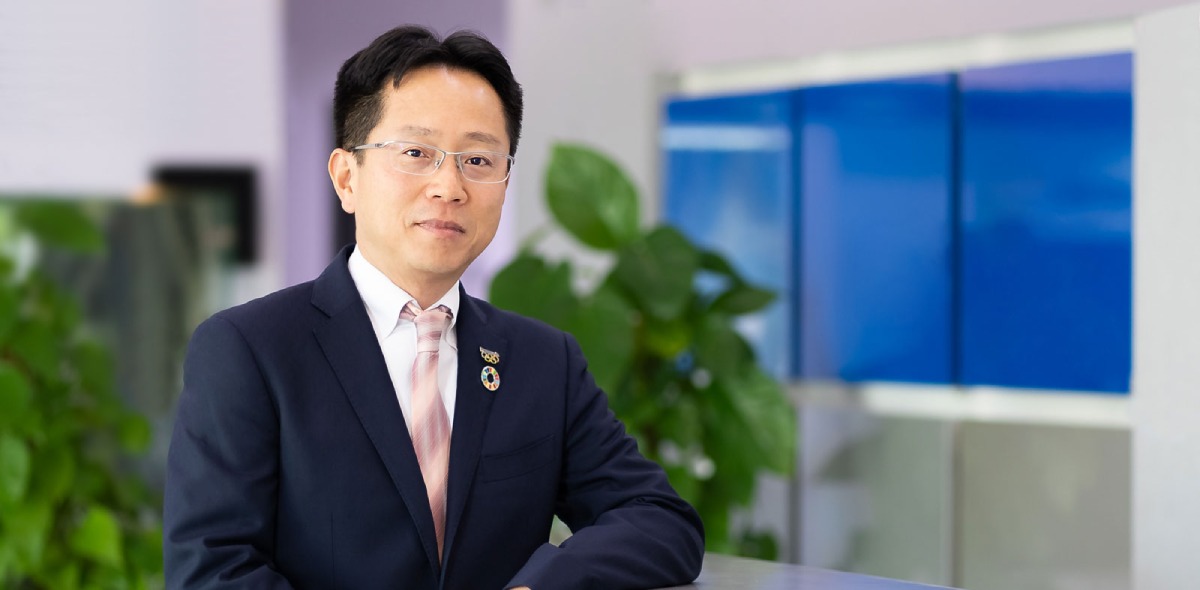Panasonic plans to reduce 1% of global emission by 2050, says Panasonic Middle East & Africa MD Hiroyuki Shibutani (Interview)
Looking ahead to 2050, Panasonic Group aspires to make a significant impact, aiming to cut CO2 emissions by over 300 million tons—equivalent to approximately 1% of the current global total emissions
(Interview)
Panasonic Group, a leader in creating cutting-edge technologies for consumer electronics, housing, automotive, industry, communications, and energy sectors globally, aims to create an impact that reduces CO2 emissions by more than 300 million tons, or about 1% of the current total global emissions, by 2050.
Hiroyuki Shibutani, Managing Director, Panasonic Marketing Middle East and Africa FZE (PMMAF) speaks to ESG Times’ Editorial Director Sibi Sathyan on the sidelines of COP 28 in Dubai on how and why Panasonic takes up this ambitious mission and how they plan to achieve it.
Panasonic has embraced a significant mission. What motivates you to undertake this mission beyond viewing sustainability as mere compliance?
Ans: Climate change is a critical problem demanding urgent action for the sake of a sustainable and fair future. Carbon dioxide (CO2) emissions are still on the rise. In 2021 alone, global emissions shot up by almost 5% compared to the previous year. A report from Nature Reviews Earth & Environment indicates that there’s now a 66% likelihood of the world exceeding a 1.5°C increase in global warming compared to pre-industrial levels within the next ten years. This underscores the pressing need for immediate and effective measures to address climate change. This urgency prompts Panasonic to release Panasonic Environment Vision 2050 along with Panasonic Green Impact Initiative globally. We believe it is our mission as well.
Can you explain more about the Vision 2050 and Green Impact initiatives of Panasonic?
Ans: Panasonic, through its Environment Vision 2050, has launched the Panasonic Green Impact initiative worldwide. This initiative aims to make a positive impact on a global scale by encouraging customers to transition to energy-efficient products. Panasonic seeks to contribute to CO2 emissions by providing energy-saving solutions and green energy technologies to business-to-business (B2B) and business-to-government (B2G) customers.
At Panasonic, our current priority is achieving a net-zero global CO2 emission status by 2030 across all aspects of our business operations. Globally, more than 1 billion customers use Panasonic products daily, contributing to an estimated 86 million tons of CO2 emissions based on electricity consumption. This figure extends to approximately 110 million tons of CO2 emissions across our entire value chain, representing about 1% of the total emissions from global electricity consumption. It is our responsibility to address these emissions, given their significant impact on our planet. The Green Impact policy is set to improve Panasonic’s environmental performance, paving the way for a more sustainable future for generations to come.
We recognize that Panasonic is committed to a significant mission. Could you shed more light on the steps taken by Panasonic to minimize Scope-1 emissions within its facilities?
Ans: Panasonic operates factories globally that rely on renewable energy, incorporating energy-efficient fixtures, smart lighting, and HVAC systems. Even in regions like the Middle East, where we don’t have production facilities, we continue to offer energy-efficient products, contributing to a reduction in environmental impact by our customers. Our commitment extends to minimizing emissions resulting from the use of our products. We plan to achieve this by developing and delivering new technologies and solutions that enhance efficiency, particularly for our business and government customers. Looking ahead to 2050, Panasonic Group aspires to make a significant impact, aiming to cut CO2 emissions by over 300 million tons—equivalent to approximately 1% of the current global total emissions.
What measures/initiatives do you plan to implement to lower emissions within the Scope-2 category?
Ans: Given the current state of the supply chain, Panasonic encounters challenges in managing Scope 2 emissions, particularly in regions where we lack factory operations. In Japan, we have implemented robust measures, including the use of eco-friendly and public transportation for product transport. We are actively encouraging our supply chain partners to establish green infrastructure for our supply chain facilities.
How do you expect that your Green Impact initiative will tackle emission concerns within the Scope-3 category?
Ans: Worldwide, there is a global shift towards replacing fossil fuel-burning equipment with electrical alternatives, presenting an opportunity for Panasonic Corporation. We have numerous initiatives geared towards substantial emissions reduction. For instance, Panasonic is capitalizing on its extensive experience in battery technology and production to enhance its competitiveness—focusing on battery capacity, cost, and supply capability—in the development and mass production of lithium-ion battery packs for electric vehicles (EVs). An example is the cylindrical, high-capacity 4680 cell, set to become mainstream.
Panasonic’s RE100 Solutions initiative aims to power its entire operations with 100% renewable energy generated in-house, utilizing a combination of pure hydrogen fuel cells, solar cells, and storage batteries. The Panasonic Aquarea water heater, featuring a built-in heat pump and now available in the European market, efficiently transfers heat captured from the air to produce hot water with minimal power and significantly lower CO2 emissions compared to conventional heaters fueled by fossil fuels.
In the coming decades, Panasonic’s innovative products, like the Aquarea water heater, will replace existing items, leading to substantial reductions in energy consumption.
Achieving circularity is crucial for sustainability, particularly when it comes to handling electronic waste. How do you address this challenge?
Ans: The company is dedicated to reducing CO2 emissions across the entire product lifecycle, aligning with the principles of a circular economy for sustainable growth. For example, to optimize the use of resin present in numerous home appliances, Panasonic is expanding the utilization of recycled resin derived from obsolete appliances. Leveraging proprietary technology, Panasonic collects three types of resin in a highly purified form. The recovered resin is then reused as a component in new products. In the lithium-ion battery business, the company focuses on battery collection and recycling following regional regulations. We are expanding our circularity initiatives to more products and businesses to make the earth a better place to live.
Sibi Sathyan
Related posts

Subscribe
Error: Contact form not found.

